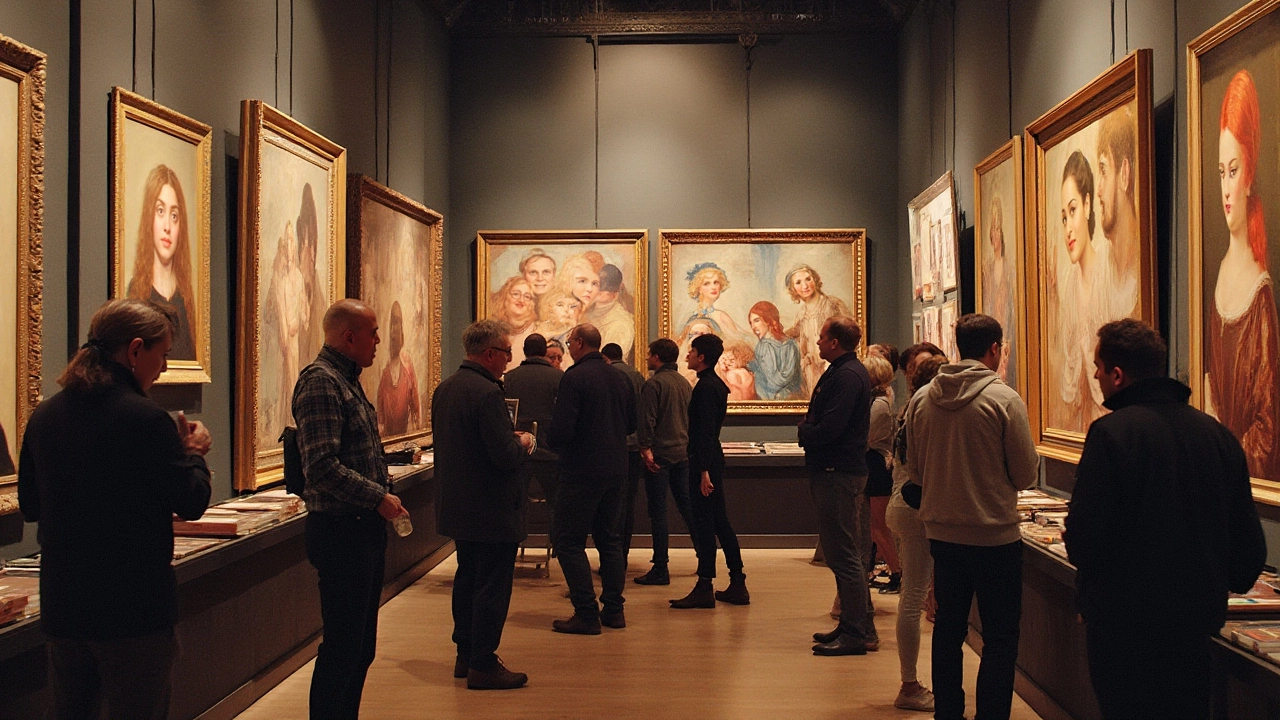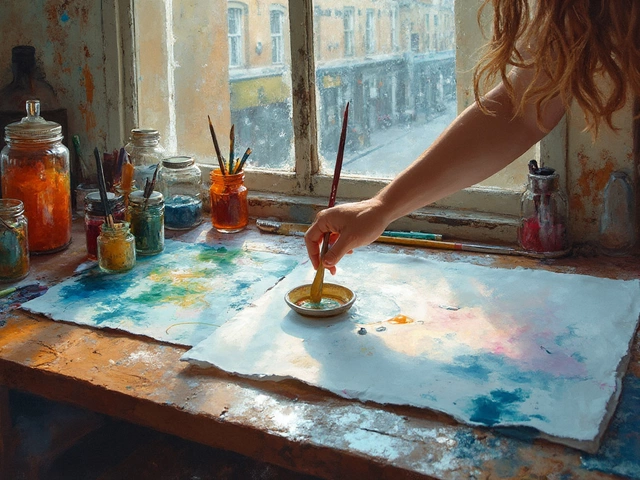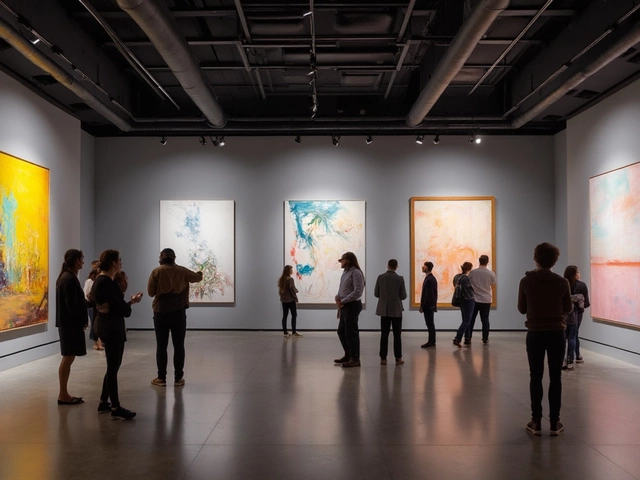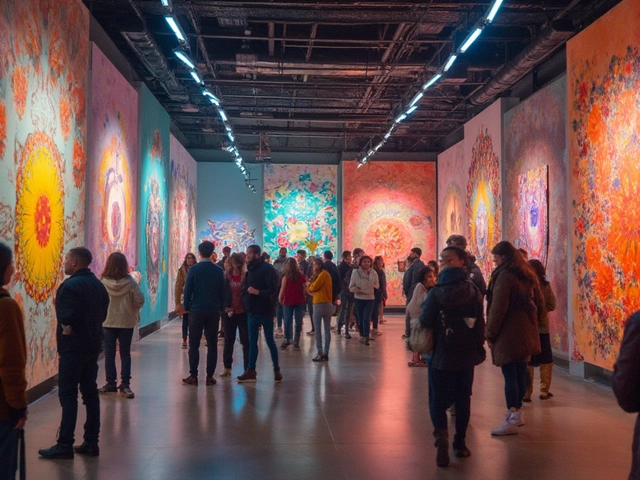Painting has been a form of expression that touches the soul and lights up the imagination. But when it comes to buying or selling a portrait painting, how do you put a price on it? This question may seem simple, yet it's laced with numerous considerations.
Whether you're an art enthusiast, a budding collector, or an artist venturing into selling, understanding the pricing of portrait paintings isn't just exciting—it's crucial. This is about peeling back the layers of what makes a piece valuable beyond the strokes of the brush, diving into aspects like the artist's journey, the nuances of the artwork, and the whispers of the market.
Exploring the world of art pricing requires more than just numbers. It involves an appreciation for creativity and a knack for spotting what dazzles the eye. Let’s walk through this maze and unravel how to estimate a fair price for these meaningful paintings.
- Factors Influencing Portrait Painting Prices
- Assessing Artist Experience and Reputation
- Understanding Market Trends and Demand
- Tips for Buying and Selling Portrait Paintings
Factors Influencing Portrait Painting Prices
When you're considering buying a portrait painting, it's easy to get swept up in the emotion and beauty of the piece. But if you're deciding on how much to pay, there are specific elements that come into play. First and foremost, the artist's reputation holds significant weight. If the artist is well-known and has a history of exhibitions, their name alone can skyrocket the painting's price. This isn't just about bragging rights; it's rooted in an artist's proven ability to produce works that resonate with the public and are considered collectibles.
The complexity of the art itself can't be overlooked. A painting that involves intricate details, vibrant color palettes, and unique techniques will inevitably demand a higher price compared to a simpler one. The amount of time and skill dedicated to the craft is crucial. This complexity isn't just about the visual appeal—it's about the artist's dedication and the creative process that classy fingers wove into the final masterpiece.
Size is another crucial factor; larger paintings typically come with a higher price tag. This may sound straightforward, yet the costs associated with creating and transporting bigger pieces are substantial. Aside from material costs, there's an emotional heft in larger works, as they command presence and can transform a space entirely. Splitting hairs, the price can be swayed by the medium too. An oil portrait painting might fetch a higher price than watercolors, given the rich, vivid tones that oils convey and the longevity they promise.
"The value of art isn't just in the canvas but in the conversation it ignites," highlights renowned art critic James Eldridge in a 2023 article.Adding to these factors, market trends shine a light on typical values and consumer preferences. The demand for portraits shifts based on cultural trends and the prevailing interests of collectors. An art market swaying towards realism will see realistic portraits fetching higher prices. In contrast, when abstraction thrives, so do its portraits. It's a dynamic dance, one dictated by taste and timing.
Finally, provenance matters—knowing a piece's lineage assures buyers of its authenticity and history. When a painting is backed by a credible history, whether it's past owners or exhibitions, the value often increases. As such, purchasing a portrait painting isn't as simple as picking what catches your eye; it involves delving into a tapestry of value-determining factors. Each painting is more than just an image—it's a combination of creativity, history, and market dynamics that carefully coalesce to present its price.
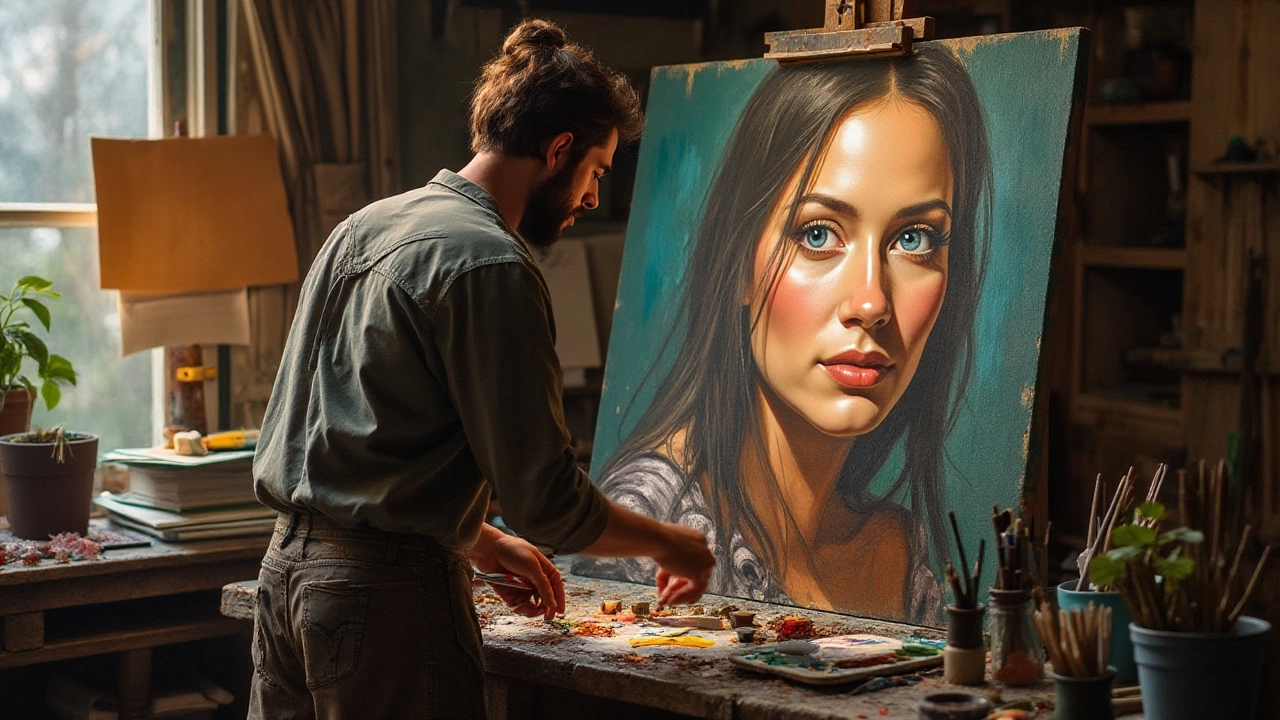
Assessing Artist Experience and Reputation
When it comes to determining the price of a portrait painting, one cannot overlook the significance of the artist’s experience and reputation. These elements often serve as key indicators of a painting's value. The journey of an artist, their years spent honing skills, and their exposure to various art forms play a huge role. An artist with a long career might have a higher price tag associated with their work because they’ve consistently shown creativity and skill over time. Attending esteemed art institutions or learning under celebrated mentors generally influences how artists are perceived in the market.
Reputation, on the other hand, can be tricky. While an artist might have abundant experience, reputation relies heavily on public perception and critical acclaim. An up-and-coming artist who has caught the attention of critics might cause a sudden surge in demand for their pieces, despite having a shorter career span. A well-timed gallery exhibition or a featured article could propel their reputation, adding to the art pricing significantly. History tells us that Vincent van Gogh, famously poor in his lifetime, now has works valued in the millions. Herein lies the unpredictable nature of art valuation.
Buyers should consider exploring not just the resume of an artist but also delve into their influence in the art world. Are they frequent winners of prestigious awards? Have they been invited to showcase their work internationally? Such accolades often signify that their work holds merit, judged by peers and experts in the industry. But this isn't just about fame; it's about craft and mastery. Some critics claim that artist Louise Bourgeois once said,
"You can retrace the path of her life through her work."It's the life story an artist imbibes in their work that often makes a portrait telling.
Key Factors to Consider
- Awards and Recognition: A strong portfolio of awards can imply that an artist's work is sought after and valued for its innovation or influence.
- Exhibition History: Regular appearances at galleries and exhibitions suggest an artist's active engagement in the art world.
- Artist Network: Collaborative works or projects with renowned artists can enhance the perceived prestige.
Statistics also show trends about how reputation affects pricing. According to a survey conducted by Arts Economics, paintings by artists with global recognition often fetch 20%-50% more than those who are relatively unknown. Although subjective, understanding these metrics can help buyers make informed decisions on painting cost. Thus, when investing in art, be it as a collector or admirer, discerning the blend of experience and reputation can unlock deeper appreciation and investment potential.

Understanding Market Trends and Demand
Stepping into the vibrant world of portrait painting is much like navigating the nuanced corridors of a bustling art marketplace. To price art effectively, one must wholeheartedly grasp market trends and demand, as these elements shape perceptions of value and influence purchasing decisions. Historically, market trends have shown a fascinating evolution. The art world's pendulum swings between styles and preferences, often driven by cultural changes, economic conditions, and even the social media frenzy that amplifies a specific artist or style overnight.
In recent years, a noticeable shift towards contemporary and experimental portrait styles has emerged. According to data from Art Basel and UBS, global art sales reached $67.4 billion in 2022, reflecting a growing appetite for diverse artistic narratives and portrait paintings that speak to modern sensibilities. This trend showcases buyers' keen interest in art that not only decorates but also initiates conversations beyond the canvas. Additionally, the rise of digital platforms has opened new avenues for artists to display their work, reaching audiences worldwide and enhancing demand for unique pieces.
"The art market is constantly evolving, with collectors seeking pieces that resonate with their personal experiences and the contemporary cultural atmosphere," suggests Clare McAndrew, founder of Arts Economics.As such, artists must remain aware of these evolving trends to stay relevant. Aligning their work with current market tastes can prove advantageous, but it's equally essential to maintain authentic artistic expression. There's a delicate balance between staying true to one's vision and aligning with buyer preferences. By fostering a deep understanding of buyer behavior, artists and sellers can identify what drives interest and, ultimately, the willingness to pay.
One can't ignore the crucial role that networking plays in shaping market trends. Art fairs, galleries, and auctions often serve as launchpads for emerging artists, catapulting their works into the spotlight. These platforms highlight what collectors are buying, what styles are gaining traction, and what themes are resonating with the public. Emerging artists can use these insights to tailor their portrait painting approaches, often blending traditional craftsmanship with contemporary flair. By doing this, artists not only meet market demands but also contribute to shaping these demands.
An artist’s location and cultural background can also visibly impact demand. Regional art trends often illuminate broader global interests. For instance, Asian contemporary art has left a significant mark on the market, as has Latin American art. Recognizing one's place within these global trends allows for a more strategic approach when setting fair prices. In this light, the journey to understanding and navigating art market trends becomes a strategic exercise that requires sharpening one's observation skills, staying informed, and maintaining a pulse on the cultural zeitgeist that perpetually refreshes itself.
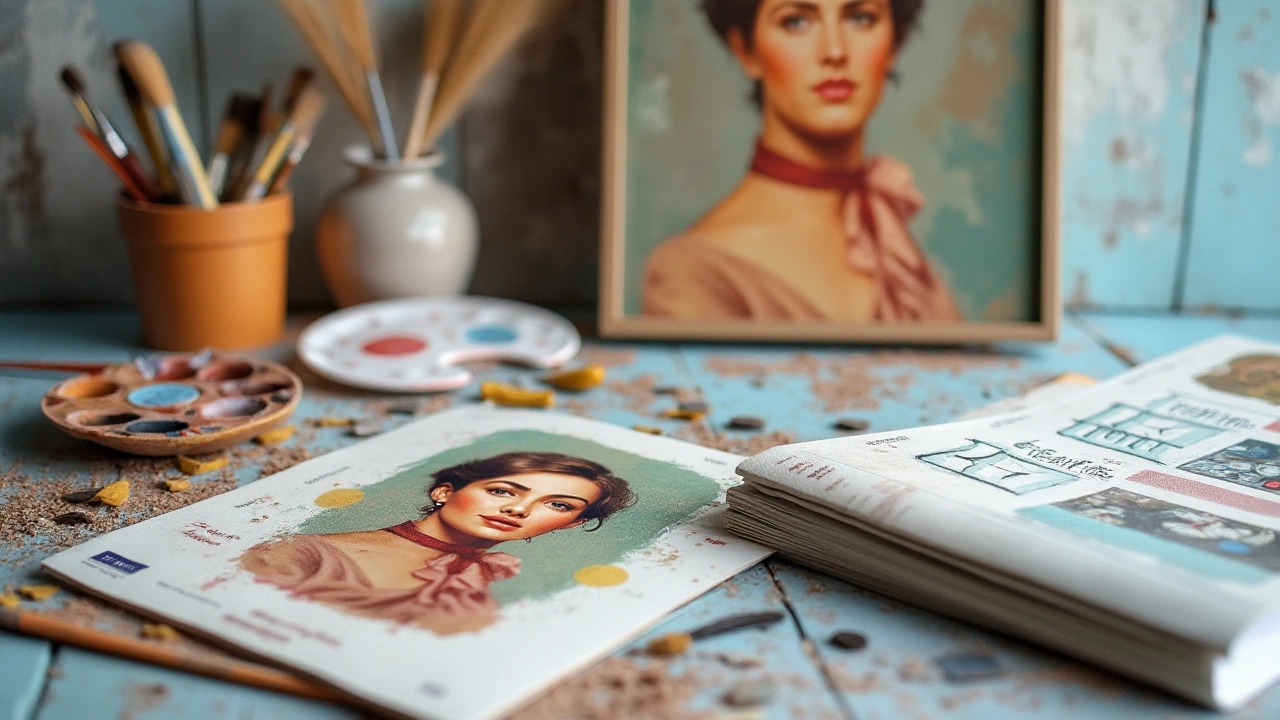
Tips for Buying and Selling Portrait Paintings
Purchasing or selling a portrait painting can feel like entering a grand old theatre. The curtain hasn't lifted yet, and you are left anticipating the visual and emotional feast awaiting you. There is more to this artful exchange than meets the eye, and understanding the nuances is essential. As a buyer, knowing what aspects to focus on can make the difference between a delightful acquisition and a potential disappointment. First, take the time to research the background of the artist. An artist's career stage, education, and exhibition history often influence the painting's value. Emerging artists may offer exceptional work at lower prices, while established artists might demand a premium.
Next, consider the condition and provenance of the painting. Provenance refers to the documented history of the artwork, confirming its authenticity and chain of ownership. A well-preserved piece with a clear and respectable provenance often holds greater value in the art market. Pay attention to the painting cost, ensuring it's aligned with current market trends. Art fairs, auctions, and galleries display works at various prices, offering a glimpse into ongoing shifts in the art world. As a buyer, comparing prices on similar pieces helps ensure a fair transaction.
"Art is not what you see, but what you make others see." - Edgar Degas
For sellers, pricing your work requires a careful balance between artistic integrity and market realities. Establish your base price by considering your time, materials, and living expenses—a practical step often overlooked by artists. Understanding your audience is crucial here. Who do you envision owning your portrait paintings? Knowing your target market allows tailored marketing strategies that resonate with potential collectors.
Explore various sales channels. Traditional galleries offer exposure but might involve commissions, while online platforms provide a global reach with direct control over sales. Engage with social media to showcase your art and build relationships with art enthusiasts. Attending art fairs and networking events can also open doors to lucrative opportunities.
Consider offering payment plans for higher-priced pieces. Creating accessibility can attract collectors who might shy away from a single large payment. Finally, document each sale meticulously. Maintain records of your artwork's dimensions, medium, and a high-quality photograph. These not only enhance your portfolio but strengthen the painting's provenance for future transactions.
In this vibrant world of art, where creativity knows no bounds, these tips serve as your compass. Look beyond the canvas to discover the storytelling potential and joy that each portrait painting can bring. Whether you're buying or selling, embrace the process for both its challenges and rewards. Remember, art is a lasting investment, enriching lives in ways both profound and unforeseen.
